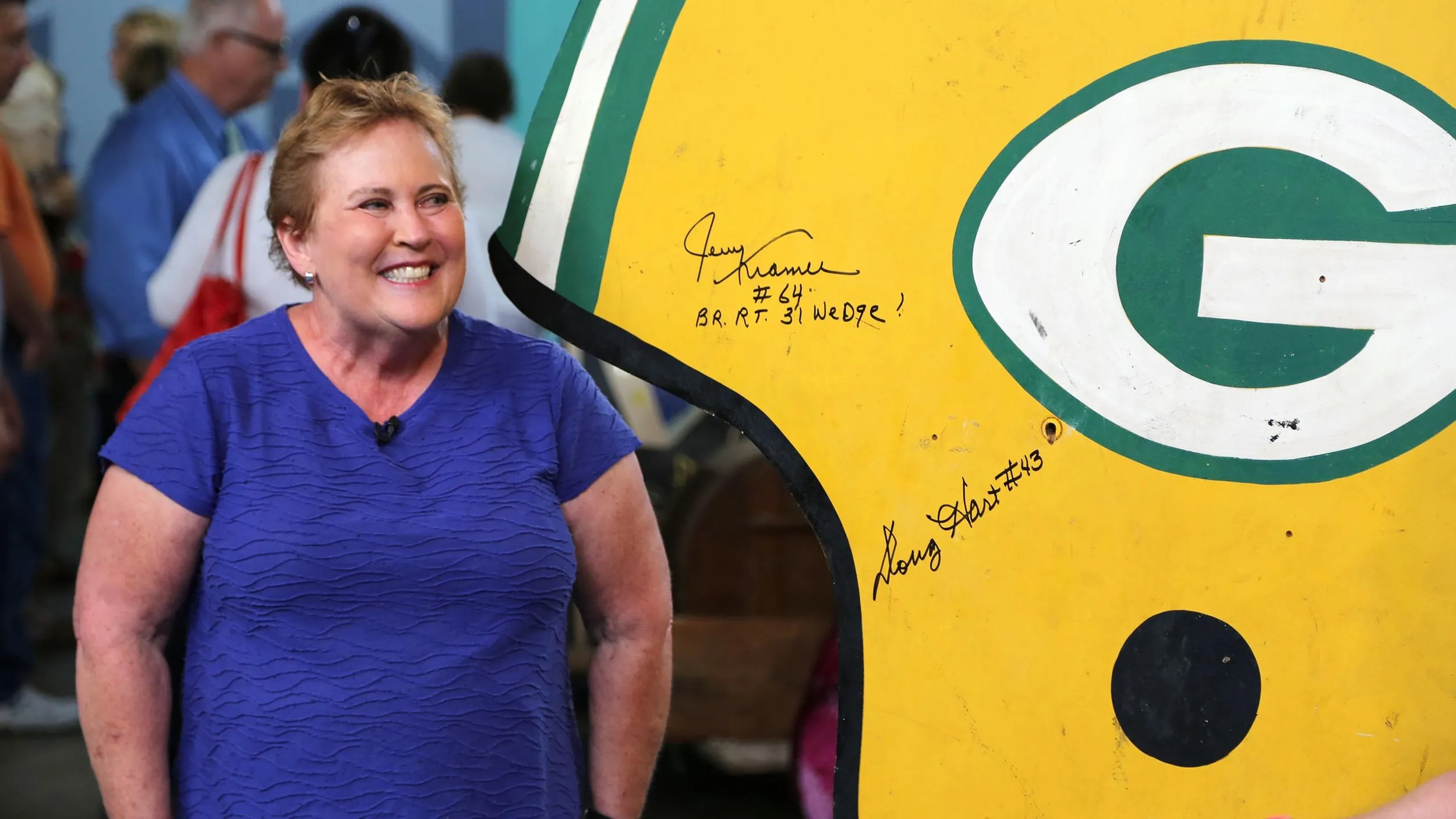GUEST: What I do know about it is that my great-uncle Bill purchased this item probably in the late 1920s to the early 1930s, I believe in Chicago. His sister operated one of the stores called The Bigfoot Indian Curio Store, downtown Lake Geneva. And this Indian, my aunts told me, was outside the store for probably 40 years, and I remember it as a child, going to the store and seeing her-- or it, I don't know if it's male or female. I always thought male, but some people in the family told me female. It was in the window at that time. But my aunt told me that they actually for many, many years had it outside the store and people would take their pictures with it. She said there's generations of families that took their pictures with this Indian. And then they would wheel it in the store at night. So it was at her store from probably the early '30s to... At least 30 to 40 years.
APPRAISER: So it operated right through the wartime?
GUEST: Yes.
APPRAISER: WOW. Stylistically, when we look at this, first of all, we know that it's carved wood. And the wood was white pine.
GUEST: Oh, really?
APPRAISER: And that was the go-to wood for most carving shops in America. It was a clear wood, it was soft, it was easy to carve, and it took paint very well. And then they polychrome-paint decorated it. So when this was made, this would've been a very bright red, green, yellow paint.
GUEST: Yes.
APPRAISER: And the reasons it's darkened is that people, when they put it outside, would varnish it to protect it from the weather.
GUEST: Oh, yes.
APPRAISER: And over the years, the varnish darkens, especially when the sun bakes it. And you can see the surface on this, it's baked on there, the paint.
GUEST: Yes, yes.
APPRAISER: We know by this hair, the way it's carved and the way it flows down, we know by the hands, and how beautifully they're carved. They're not clunky, they're very delicate. And we know by this decoration...
GUEST: Yes.
APPRAISER: On the side of the legs that this was carved by John Philip Yaeger out of Baltimore, Maryland.
GUEST: Really?
APPRAISER: He was a German.
GUEST: German?
APPRAISER: Came to America in the late 1840s, he was already somewhat of an adult, opened up a carving shop.
GUEST: Really?
APPRAISER: Made ship's pieces, molds, and tobacco store trade figures. By this time, which I suspect is about 1870, 1880 on this piece...
GUEST: Okay, okay.
APPRAISER: He was running a pretty large operation.
GUEST: Okay.
APPRAISER: And we're going to spin it around to show that the back is not as complicated as the front.
GUEST: Right.
APPRAISER: And the reason for that is, these were up against doors, so the carver did not have to get as detailed in the back, because the backs were rarely seen. Now, you notice how much brighter it is?
GUEST: The color is fantastic in the back.
APPRAISER: Fantastic-- and the reason for that, also, is, it didn't bake in the sun as much.
GUEST: Right.
APPRAISER: But you see this beautiful hair.
GUEST: I know. Wonderful. I know.
APPRAISER: You see this over here?
GUEST: Yes.
APPRAISER: This is a make-do repair.
GUEST: Okay.
APPRAISER: Someone broke the arm off. (gasps) So they put a bolt through there and repaired it.
GUEST: It looks old, so it must have been quite a long time ago.
APPRAISER: Probably happened early on in its use.
GUEST: Early on, okay.
APPRAISER: What's wonderful, also, about it, is this negative space. So this hand is reaching out to beckon you for the figure. This metal band was an add-on at some point in time.
GUEST: Oh, really?
APPRAISER: So the band and the feather were added, probably, when they made into this tourist stop. And at some point in time, the nose was knocked off.
GUEST: Oh, really?
APPRAISER: Yeah, and you can see if you really look, you see the crack there where it was reattached, or possibly, this is a newly carved nose at that time.
GUEST: Okay.
APPRAISER: Which could have been in the late 1800s. Very desirable carver, a rare form. Wonderful early surface, if not original in most cases. I would put a retail value of $20,000 to $25,000 on it.
GUEST: Oh, my goodness. Wow.
APPRAISER: And I think with a little attention to the nose, I think it would look more like an original Yaeger, and I think that would help the price immensely.











